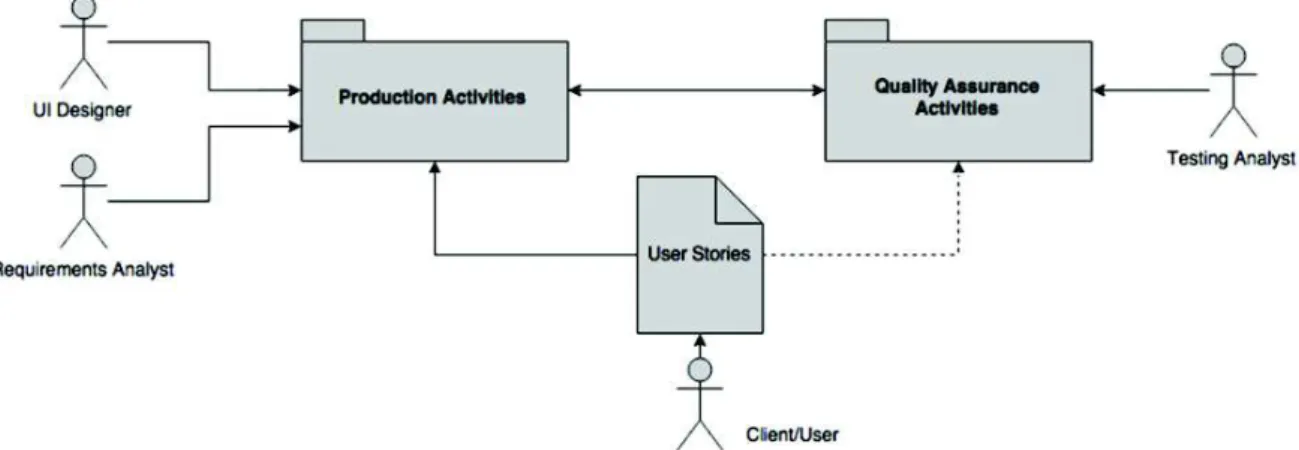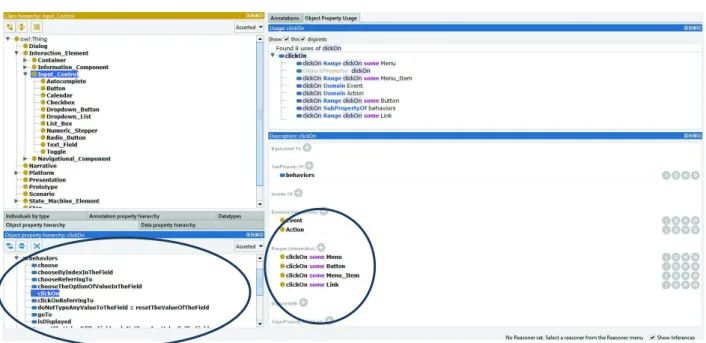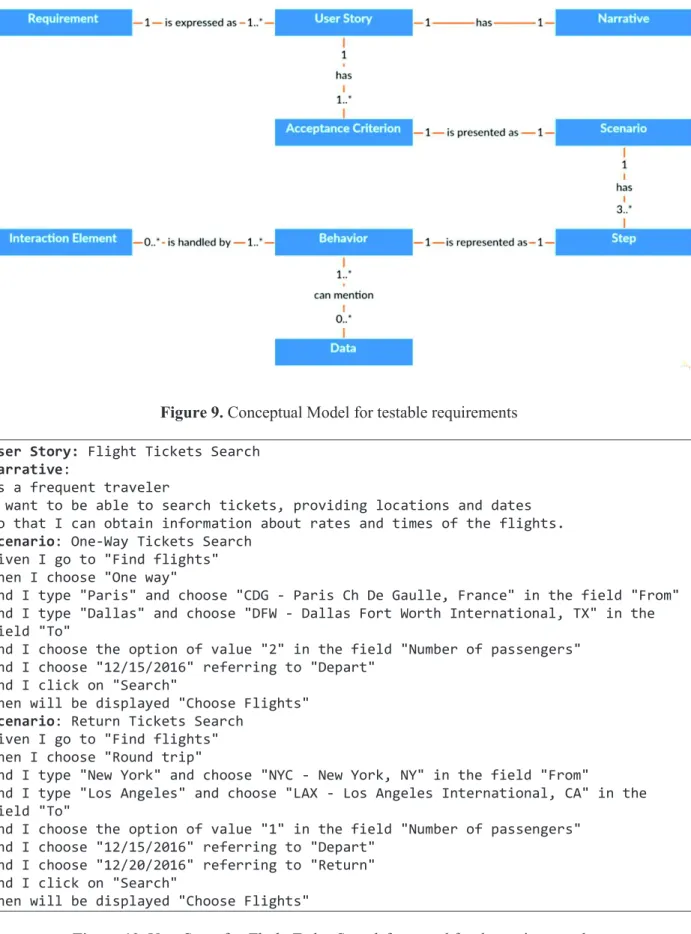An Approach for Multi-Artifact Testing Through an Ontological Perspective for Behavior-Driven Development
Texte intégral
Figure


![Figure 2. Template for specifying User Stories as defined by North [16] and Cohn [8]](https://thumb-eu.123doks.com/thumbv2/123doknet/3107977.88212/6.892.100.812.455.700/figure-template-specifying-user-stories-defined-north-cohn.webp)

Documents relatifs
Our formalization is based on a goal driven approach and will allow us to enhance coordination, knowledge sharing and mutual understanding between different actors of
Upon introducing a random on-site potential, namely tak- ing ǫi as a random variable in the interval [−∆/2, ∆/2], two new phases appear: for large J/U , an Anderson glass (AG)
The accessible energy calculated by the model at 4.65 K and 3.55 K is lower than that of the experimental results, but higher at 2.55 K. Therefore, depending of the real value
Testing and tracing requirements during the development of an interactive system is an onerous task, especially because the development team has to deal with many cycles
This study envisages such an integrated approach which consolidates knowledge capture via domain model and exploitation techniques to build a modeling abstraction
Key words: Metamodelling, Properties Validation, Verification, Temporal OCL, Process Model, Petri Nets, LTL, Models Semantics, Model Transformation..
The use of the Canadian Highway Bridge Design Code, CHBDC (2006) and the current recommendations for design UHPFRC elements was investigated and a simplified flexural design
truly large scale search the index structure must be on disk, since approaches based on structures such as a kd-tree that hold all the keypoints in memory are not scalable [6]. The





